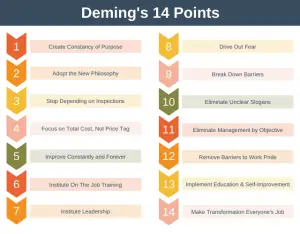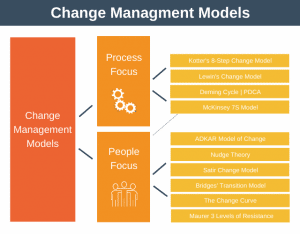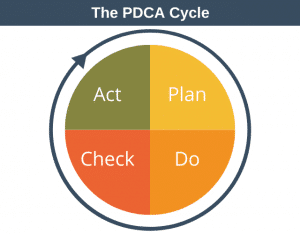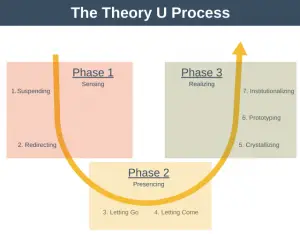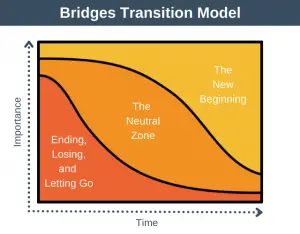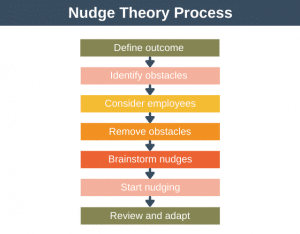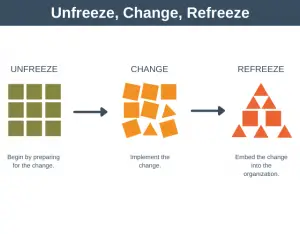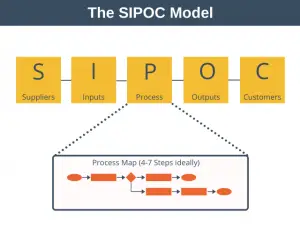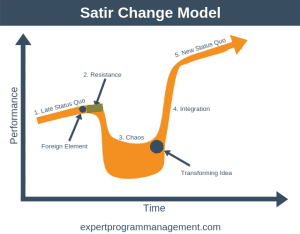To remain competitive, organizations must continuously change. Without change, organizations stagnate, become uncompetitive and irrelevant, or go out of business.
To thrive, organizations must accelerate their speed of change to execute change faster than their competition.
Thus, change is not just important but critical to every organization. Given how important change is, it might surprise you to know that Kotter’s research showed that only 30% of change initiatives within organizations were successful.
Given that 70% of change initiatives fail, all leaders face a critical question: How can I ensure that my change is successful? You might know what outcome you want, but how do you go about delivering it? What are the steps you should take to maximize your chances of success?
Trying to answer this question is what lead John Kotter to develop Kotter’s 8-Step Change Model. Today, it’s one of the best-known and most widely applied models for leading change.
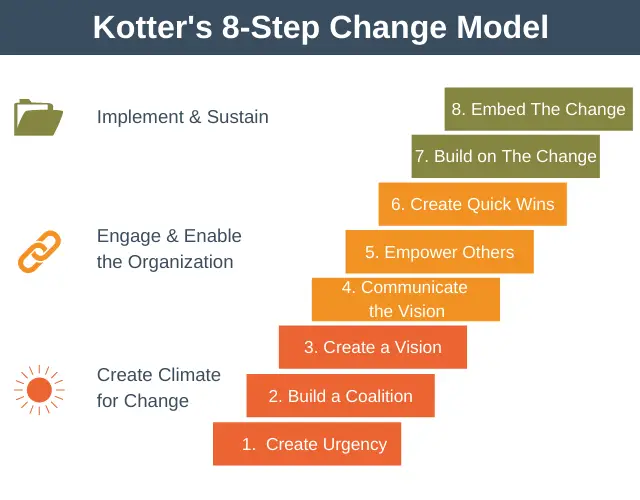
John P. Kotter first described the model in a 1995 article in the Harvard Business Review. He later described the model in detail in his 1996 book, Leading Change.
Kotter developed the model by observing numerous organizations trying to change and, from this, extracted common success factors and combined them into a methodology.
Broadly speaking, we can say there are three phases to the Kotter change model:
- Create a climate for change: this phase, which happens first, is about creating a shared understanding of the change you want to make and why you want to make it.
- Engage and enable the organization: this phase is about engaging your team so that they are empowered and enthusiastic to effect change with the organization.
- Implement and sustain: this phase is about pressing ahead after your initial successes to build momentum and fully embed the change within your organization.
With that, let’s jump in and take a more detailed look at each step of Kotter’s 8-Step Change Model.
Step 1: Create a Sense of Urgency
You need to create a sense of urgency around the initiative that convinces others of the need to act immediately.
In this step, what you’re trying to do is build a compelling case for change so that people understand why the change is necessary. Your aim is to build lots of support for your initiative so that the sense of urgency is shared and your peers are no longer happy with the status quo.
Kotter estimated that a minimum of 75% of management needs to back an initiative for it to be successful.
Step 2: Form a Guiding Coalition
It’s not enough to try and push through a major change by yourself; to be successful, you need to form powerful coalitions with key people within your organization.
By getting influential and respected people visibly on your side, you are far more likely to drive through the change successfully.
These key people must be prepared to work together outside of the formal hierarchy and act as change leaders for the initiative.
Bring these key people together to form a change coalition or powerful change steering group. Aim to have a diverse group of key powerful people from different parts of the organization who combined have enough power to drive the change through to success.
Step 3: Create a Vision
You need a clear vision of how you see the future organization looking and why it’s necessary to change. This will help everyone understand why you’re asking them to move outside their comfort zone and action this change.
Every member of the change coalition should be able to describe the vision in just a few minutes, and it’s a good idea for you as the leader to practice your vision speech often. You want your vision to be easily understood by the people who will be affected by the change.
During this stage, you also create initiatives to realize the vision, and you should link these initiatives to the vision, so it’s clear to everyone how they contribute towards realizing the vision.
Step 4: Communicate the Vision
It’s not enough to have a vision; you need to communicate it. You want to win the hearts and minds of those who have to execute the change. That way, you’ll create a willing army of people who want to make the change happen.
In essence, you want to get everyone to buy-in to the initiative, understand the urgency of the change, and all wanting to pull in the same direction.
Your communication needs to be clear and laser-focused because it competes with all the other hundreds or even thousands of communications happening within your organization every day.
In this phase, you want the team to feel that this isn’t a project; it’s a mission.
To cut through, make use of all the communication channels available to you. Every time you speak or communicate about the initiative, remember to tie it back to the vision.
Step 5: Empower Others to Act on the Vision
Until now, you’ve been painting a picture of the vision to inspire your team. Now the entire change coalition needs to step up and remove any blockers or barriers so that the team can get on and implement the vision.
This could mean many things, including:
- Providing training or coaching so your team has the skills they need.
- Creating an organizational structure, either temporarily or permanently, that is best suited to the challenge.
- Setting up a reward system aligned to the desired outcome so your team is motivated.
- Identifying those that are resistant to change and working with them to gain their buy-in as appropriate.
- Hiring or borrowing the people you need where there are gaps.
By removing barriers and overcoming obstacles, the entire change coalition empowers the team to succeed.
Step 6: Create Quick Wins
Major transformation can take a very long time, and so people can lose faith or give up altogether if they don’t see any signs of progress.
Thus, in this step, you structure your initiative so as to achieve quick wins early on. This means breaking the initiative down into phases with one or more visible tangible benefits delivered at the end of each phase.
Seeing early success is a great way to build momentum and energize your team. It also builds resilience for when difficult obstacles are encountered later.
You should communicate your successes regularly and widely. Remember that nothing breeds success like success, so praise and reward those who help reach the targets.
Step 7: Build on the Change
Real change takes a very long time. Until new approaches are deeply ingrained, there is a high-risk of people reverting to old ways of doing things. Quick wins are only the very start of what needs to happen to achieve long-term change.
This means you must continuously repeat steps four through six of the model by communicating the vision, empowering others, and scheduling quick wins.
It can be easy to take your foot off the accelerator once you see some quick wins. This step counters that tendency by encouraging you to stay focused by continuing to set goals to build on the successes and momentum you’ve already achieved.
Step 8: Institutionalize the Change
In this step, you make the change stick. The change needs to become a fundamental part of how your organization works and its culture.
That means that the change must be embedded into organizational systems and processes. It must be embedded into the daily work of everyone in the organization.
Communication Tip
The style of your communication should adjust based on the situation you find yourself in. What worked at the beginning of the initiative may not work when you’re deep in execution mode.
A tool that can help you calibrate your communications is The Change Curve.
Using this tool can help you figure out how best to communicate based on where your team members sit along the change curve.
Kotter’s 8-Step Change Model: Advantages
The advantages of Kotter’s 8-step Change Model include:
- It focuses on obtaining buy-in from key employees to ensure success.
- It fits nicely on top of traditional organizational structures.
- It provides clear steps to guide you through the process of change.
Kotter’s 8-Step Change Model: Disadvantages
The main disadvantages of Kotter’s 8-step Change Model include:
- It is a top-down model, so you can miss potential opportunities because not everyone is involved in the vision’s co-creation.
- It can lead to resistance and resentment amongst employees if you don’t consider The Change Curve and how people react to significant change.
- While the model is really good for initiating change, it doesn’t help you as much when it comes to sustaining change.
Summary
Changing organizations successfully is challenging. Kotter’s 8-Step Change Model provides a step-by-step process you can follow to give your change a fighting chance of success.
When you take the time to create a climate for successful change and build momentum through a powerful vision, removing batters, and achieving regular quick wins, you are more likely to be successful.
When you repeat the steps of Kotter’s 8-Step Change Model over the long term, then you can make the change a core part of your organization and its culture.
